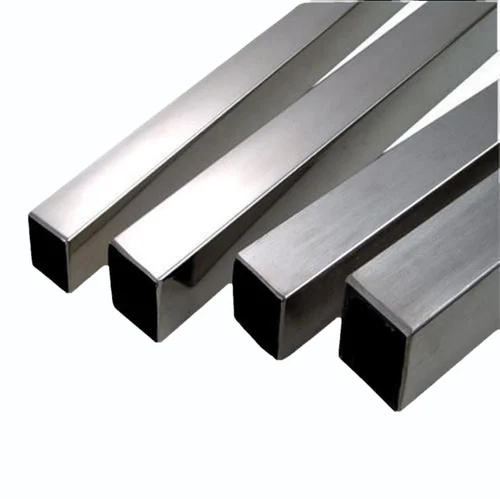When choosing materials for construction or industrial use, selecting the right type of stainless steel is very important. Two of the most common options are the 316 stainless steel square bar and the 304 stainless steel square bar. Both are strong, durable, and rust-resistant but they are not the same.
In this blog, we’ll explain the key differences between the two and help you understand which one is best for your needs.
What Is a Stainless Steel Square Bar?
A stainless steel square bar is a solid square-shaped rod made from stainless steel. It is widely used in construction, infrastructure, machinery, marine work, and decorative projects. These bars are known for their smooth finish, durability, and strength. They are easy to cut, weld, and shape into different forms for multiple uses.
The most common stainless steel grades used for these bars are 304 and 316.
Overview of 304 Stainless Steel
304 stainless steel is one of the most commonly used stainless steel types. It contains around 18% chromium and 8% nickel, which gives it good resistance to rust and corrosion in most environments. It performs well in indoor and dry outdoor settings.
Advantages of 304 stainless steel square bar:
- Affordable and easy to find
- Good strength and durability
- Suitable for general-purpose use
- Easy to weld and fabricate
Overview of 316 Stainless Steel
The 316 stainless steel square bar contains the same basic elements as 304, but with one major addition — molybdenum, usually around 2-3%. This small addition makes a big difference in corrosion resistance, especially in harsh environments.
Advantages of 316 stainless steel square bar:
- Superior corrosion resistance, even in saltwater
- More durable in chemical or industrial areas
- Longer service life in tough environments
Key Differences Between 316 and 304 Stainless Steel Square Bar
Here’s a simple comparison of the two:
| Feature | 304 Stainless Steel | 316 Stainless Steel |
|---|---|---|
| Corrosion Resistance | Good | Excellent |
| Saltwater Resistance | Moderate | High |
| Strength | High | Slightly Higher |
| Cost | Lower | Higher |
| Main Alloying Elements | Chromium, Nickel | Chromium, Nickel, Molybdenum |
| Ideal Use | General, indoor, mild outdoor | Marine, chemical, industrial |
Which Stainless Steel Square Bar Should You Choose?
Choose 304 Stainless Steel Square Bar If:
- Your project is indoors or in a low-corrosion area
- You need a cost-effective option
- You want good strength and appearance
- The application doesn’t involve harsh chemicals or saltwater
Choose 316 Stainless Steel Square Bar If:
- The project is near the sea or in a marine environment
- Your application involves chemicals or acids
- You want longer life with minimal maintenance
- You need a higher level of corrosion resistance
Common Applications of Stainless Steel Square Bars
Stainless steel square bars are used in many industries. Some of the common uses include:
- Structural support in buildings and bridges
- Equipment frames and machine bases
- Railing systems and architectural elements
- Marine hardware and dock components (especially 316)
- Food processing and medical equipment
- Bolts, nuts, and other fasteners
Whether you choose 304 or 316 stainless steel square bar, both are reliable, strong, and long-lasting. The key is selecting the right type based on your project’s environment and purpose.
Conclusion
Understanding the difference between 316 stainless steel square bar and 304 helps you make better decisions. While both offer great strength and resistance, 316 stands out in harsh and corrosive settings due to its added molybdenum. If you’re working in marine, industrial, or chemical settings, 316 is the smarter choice. For general applications, 304 provides great performance at a lower cost.
Always choose high-quality stainless steel square bar based on your environment, budget, and required durability. It’s an investment in the strength and life of your project.



